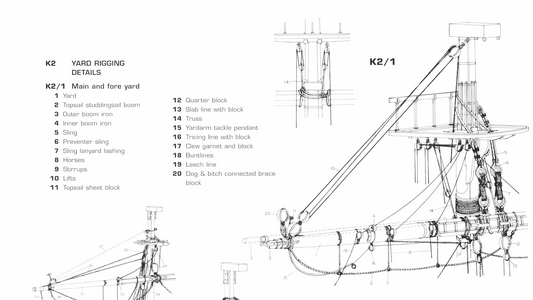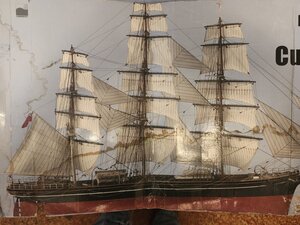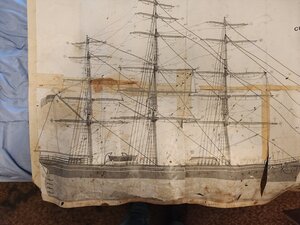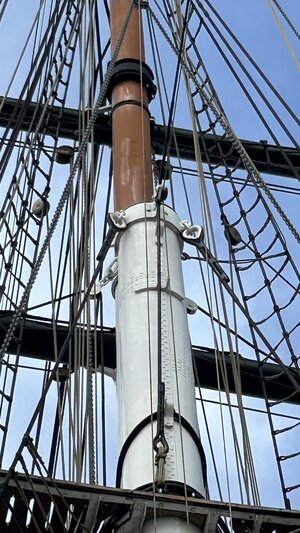Rigging a old Revell 1:96 Cutty Sark, sat in a cupboard since 1978 from what I was told. Missing a few parts and the parts that are there have been separated from the sprue, real guessing game!
Question on the lifts for the lower yards, The Revell rigging diagram shows the lifts from the yard ends running through blocks on the mast cap then down to belaying pins at the foot of the mast. Would need to be supermen to raise the yard, 1 to 1 purchase.
Found a diagram that shows one lift (port side) running through two double blocks to give a 4 to one purchase, but the other side still one to one.
With the rigging I have done in real life that does not make sense to me, surely there has to be the same 4 to one purchase on both sides? Thinking starboard side missing for clarity or a mistake.
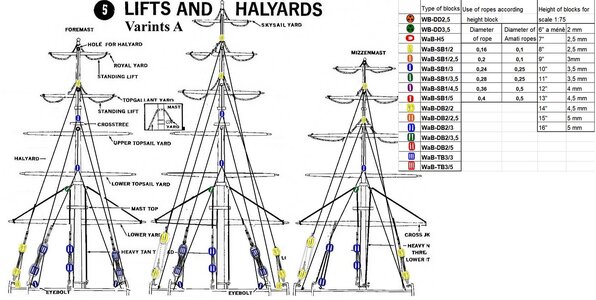
Question on the lifts for the lower yards, The Revell rigging diagram shows the lifts from the yard ends running through blocks on the mast cap then down to belaying pins at the foot of the mast. Would need to be supermen to raise the yard, 1 to 1 purchase.
Found a diagram that shows one lift (port side) running through two double blocks to give a 4 to one purchase, but the other side still one to one.
With the rigging I have done in real life that does not make sense to me, surely there has to be the same 4 to one purchase on both sides? Thinking starboard side missing for clarity or a mistake.




